Survival Kit Essentials
What you need in your survival kit for wilderness or urban survival

A survival kit can make the difference between life and death. Be it something kept in the car at all times, stored at the house in a "bug out bag", or prepared just before a backpacking trip, a good survival kit is necessary for wilderness and urban survival.
Everyone from a soccer mom to a college student to an office worker to a mountain man benefits from a well-stocked survival kit. Either when the sh!t hits the fan, if there's a major global crisis or just a heavy blizzard, or you just want to hit the mountains for a few days, having a well-stocked survival kit, bug-out-bag, or emergency supplies will give you the resources needed to survive that adventure.
Survival kits are all about size, function, and endurance. Where it's stored, precisely what it's needed for, and how long it should last determines what goes in it. A previously prepared survival kit may be your only source of supplies in an emergency situation, so prepare it carefully and meticulously.
Probably no two people will agree 100% on what should be in the perfect survival kit, so only YOU can decide what fits best for YOUR survival kit based on YOUR style, skills, needs, weaknesses, strengths, physical abilities, knowledge, and so on... But there are some definite basics and common sense items that should be included in every good survival kit.
Don't rely on a "premade survival kit" you pick up at some superstore. It's far better to put the survival kit together yourself so you know what's in it, how it works, and that it is quality and reliable. Otherwise, if you depend on someone in China to pack your survival kit you will get screwed. Quality means reliability. And when your life is on the line it's not the time to cut corners or save pennies.
The following list contains many of the fundamental and vital components of any survival kit, but by no means is 100% inclusive. You need to determine for yourself what your survival kit should contain based on specifically what you will use it for.
Essentials
Most people will not agree 100% on every item that should be included in the perfect survival kit, and it will also vary on factors such as the environment and climate, what you need the survival kit for, how large it can be, how heavy it can be, how long it should last and for how many people, your skill level, cost factors, etc.
A desert survival kit will not look the same as an evergreen forest survival kit. That said, there are some definite tried & true essential items that should always be included in every survival kit that everyone can agree on, such as firestarter (though they may not agree which kind of firestarter...)
It's never a good idea to "put all your eggs in one basket", and this especially applies to essential items such as firestarters, water purifiers, and cutting tools. Survival is all about options, so be prepared with redundencies and plan B's.
*
Fire Starter
Fire starting equipment is essential in every survival kit. Fire is one of the four primary elements (Earth Fire Wind Rain) and four key survival components (Water Shelter Fire Food).
Fire has hundreds of uses including water sterilization, saltwater distillation, cooking food, drying clothes, body warming, warding off predators and insects, signaling for rescue, sterilizing items, providing light, good hygiene, high moral, meditation and more!
One thing everyone can agree on is the need for a reliable firestarting method of some kind being in every good survival kit. A minimum of two firestarting devices should be included in every kit, but the more the better!
Magnesium Stick
Possibly the most reliable way to get a fire in virtually any situation, and best firestarting addition to one's survival kit. A magnesium stick is basically guaranteed flaming tinder.
Shave or cut off small flakes from the solid block of the basic element Magnesium (Mg) into a small pile and strike a spark onto it with the attached firesteel, it should ignite into flame. You will still need good kindling and possibly some tinder to build a final fire.
Magnesium firestarters are waterproof and work even when wet, in fact the chemical element Magnesium will burn even when submerged underwater! Magnesium sticks do not expire, they're almost indestructible, they last a long time, and they're relatively inexpensive. Truly an essential part of any survival kit.
Magnesium Stick w/ Firesteel & Striker

Ferro Rod
Better than your average firesteel. A good quality ferrocerium rod will throw a spark much hotter than a normal firesteel or flint & steel, around 3000 C / 5500 F. You will still need very dry, flammable tinder to catch that spark, but a ferro rod is one of the most practical and reliable firestarting tools available.
Ferro rods work when wet and last a long time. They are great as a primary firestarting method, saving easier, more limited options such as matches for back-up. A high-quality ferrocerium firesteel is essential firestarter for every wilderness camper.
Ferrocerium Firesteel

Stormproof Matches
Some people are just into matches. If you've gotta go with matches, pass on the average box of at-home strikers and matchbooks. Go with the only matches that are truly fit for wilderness survival, stormproof matches that burn underwater!
One good thing about matches is you actually get a flame, unlike many other firestarters that only give sparks. And good stormproof matches will burn even in strong winds and rain, where a ferro rod fire might be very difficult to start. So, stormproof matches are a solid addition to any survival kit, but don't put all of your firestarting eggs in that basket!
Stormproof / Waterproof Matches

Fire Piston
A fun firestarting tool. Works like the internal combustion engine in your car. The piston compresses air so fast that it gets super hot, up to 500F/260C, which ignites a small piece of tinder placed inside. In fact, if the fire piston were made of glass you would see it light up with a bright spark upon compression.
Not the most reliable fire starting method. You need extremely good tinder for it to work, such as dry cotton fiber or charclothe. Also, fire pistons rely on an O-ring to function, which is quite dubious (the Challenger exploded due to O-rings). Plus, fire pistons can be difficult for some people to operate, as you have to move the piston really fast.
One good thing about a well-built, solid fire piston is that it lasts indefinitely, unlike every other modern method of firestarting. Fire pistons with "pressure release valves" are more likely to fail over-time so are not recommended nor necessary.
Fire pistons are a fun novelty and completely viable firestarting method for your fire aficionado, but not really fit for your average, compact, reliable survival kit.
Fire Piston

20 Minute Road Flare
If all else fails...
Though not originally designed as a firestarter but rescue signaling device, good flares produce such a hot, long-lasting flame that if you can't start a fire with this, then your hopes of getting a fire are basically 0% unless lightning strikes a tree.
A good 20 minute road flare has several uses, including warding off animals, providing torch light, emergency heat, fire starting, and of course signaling for rescue. Downsides include short expiration dates, storing and traveling with potentially dangerous, explosive, or banned materials, dangers to children, etc.
Flares are a worthwhile consideration for any survival kit, especially when stocked in the car or other large domicile, but they're not really fit nor necessary for the average wilderness backpacker, and flares should never be intended as a primary fire starting method.
20 Minute Road Flares

Butane Lighter
Probably the easiest way to start a fire is with a good butane lighter, such as the classic BIC lighter which outshines virtually all other lighters. Made in the USA, they almost never fail. More expensive "professional" lighters may have a stronger build and be waterproof, but tend to be less reliable at producing a good, consistent flame.
While very effective and easy for almost anyone to start a fire with, butane lighters have many disadvantages. They don't work when wet or at high altitudes, they break relatively easily, run out of fuel, pose some danger of pressurized explosive gas, and can have travel restrictions (you can't carry them on an airplane for example). Also, butane lighters should not be stored in swinging temperature extremes, such as outside in one's car for long periods, as they're subject to cracking, leaking, and exploding.
Still, throwing a couple BIC lighters into one's survival kit can be a good idea, especially for less-experienced fire makers. A great way to store them is in thick ziplock bags, in multiple layers, or in a strong Tupperware type container to keep them waterproof, floating and damage resistant. The fuel will last a long time if you only use it to start campfires, and though BIC lighters don't work when wet, they are usually OK when dried out. Plus the price can't be beat.
Butane lighters are a solid, if not risk-free, addition to a survival kit for fast and easy fire starting, but it's good to practice other, more difficult and less technology-dependent firestarting methods whenever possible.
Classic BIC Lighter

Zippo type lighters don't make good long-term survival lighters because the liquid fuel tends to dry out over time. Alternatively, Zippo makes a "tinder striker" which looks like a Zippo lighter and is basically just a flint & steel. A ferro rod is better for throwing sparks, but the good thing about this product and what makes it worth mentioning is the tinder that is inside.
Having a spark means nothing if you don't have good tinder, and finding good, dry tinder can often be the most difficult piece of the firestarting puzzle. So a small, lightweight, tinder-equipped firestarter such as this can be worth its weight in gold. Not to be relied on solely, a good addition to any fire starting arsenal.
Zippo Tinder Striker

Tinder
You can have the all the best firestarting equipment in the world, but without the right FUEL to burn, it's all pointless. The hardest part of making a fire tends to be A) finding dry, flammable tinder in the nearby area, and B) getting that tinder to ignite. Once some tinder is burning strong, catching kindling and large fuel is usually pretty easy.
It's worth considering carrying some small, lightweight tinder with you in the wilderness or stocked in one's survival kit. Finding very dry, burnable tinder that will take spark and catch flame is often difficult, especially after rain or in naturally moist environments such as jungles. Manmade tinder bundles generally work well and are usually just compressed cotton and wax. Tiny and weightless with no expiration date, these tinder-quiks are a brilliant addition to anyone's survival kit.
Keep these tinder bundles as back-up for when you can't find anything else. Save them for a rainy day, literally. This is what survival is all about, options. Modern items like this are especially useful for those less-experienced in bushcraft. A seasoned woodsman might scoff at the idea of carrying tinder into the bush, but pride is not more valuable than One's life.
Modern Tinder Bundle

Fatwood is all natural pinewood that is loaded with extremely flammable resin. Originally produced for fireplaces, fatwood makes excellent tinder and kindling, and a pound only costs a few dollars.
Harvested from pine tree stumps, these wood chips will burn even when wet. To take spark, the wood chips must be broken down into fine pieces by shaving, sanding, or breaking apart the fibers. This fine tinder bundle should then take a quality spark.
Due to size and weight, fatwood is not very practical for your average survival kit, but if you're intent on carrying tinder with you in the wilderness, it's hard to beat fatwood, which is just dry, resin-rich pinewood.
Charcloth is also worth mentioning as an excellent, transportable tinder perfect for survival kits. It is just cotton cloth that has been burned without oxygen being allowed to it, therefore it is carbonized and will take a spark like the finest of tinders.
Fatwood Kindling Sticks

*
Water Purification
Something that is essential in every single survival kit is a water purifier. Drinking water is a constant need, and in a survival situation chances are high that the water around you will be contaminated in one way or another. So, stock up on this crucial component of survival gear.
Fire can be considered one form of water purification if there is a metal container, but a survival kit should also include one or more other methods of attaining safe drinking water.
Iodine
Classic tried & true method, used for decades, reliable, cheap. Drop a few in your water (follow product instructions), wait half an hour, and you're good to go! One of the easiest and most reliable water purifying methods, a must-have for any survival kit!
Iodine Water Purification Tablets

Potassium Permanganate
A simple compound with many uses, including water sterilization, wound antiseptic, and even firestarting! Works by the principle of oxidation. These KMnO4 crystals are a great addition to any survival kit. Add a few sprinkles to a liter of questionable water and wait 30 minutes, the microorganisms should be oxidized to death.
Potassium permanganate can also be used to start fire by mixing with glycerin, sugar, polyethylene glycol, and/or other substances to induce a chemical reaction that produces significant heat and will ignite tinder. Plus, it is very stable and has an almost indefinite shelf-life.
Potassium Permanganate crystals KMnO4

LifeStraw
Relatively new on the market and shaking things up. An awesome tool, contains microfilters that make almost any water safe to drink no matter how dirty or rank it is.
Originally developed by European scientists for third-world countries with unsafe drinking water. The filters are so small they remove all possible parasites, viruses, protozoa, and bacteria, making virtually any water drinkable straight from the source. Just stick it in that foul puddle of dead animal juice and get yourself a gulp!
Does not filter salt water, and is not reliable against chemicals. But very useful and possibly essential, depending on how dirty you expect the water to be in your environment and what water purification methods are at your disposal.
Lifestraw Water Filter

UV Radiation
Worth mentioning, "UV Water Purifiers" are modern tools that use ultraviolet radiation from a lightbulb to kill 99.9% of harmful microorganisms in water, but they are not the most reliable means of securing safe drinking water. With their likelihood of mechanical failure much higher than other water purifying methods, this technique is best left as a 3rd, 4th, or 5th option.
The principle works the same as the Sun. In fact, you can use the Sun itself to do the same thing by exposing a thin layer of clear water to direct sunlight for several hours. The Sun's UV rays should kill all harmful microbes in the water and make it safe to drink, (excluding chemicals).
While these modern UV water purifiers can be quite handy when they work, there are just to many finicky "moving parts" in the devices to put your life in their hands. Best left as an experimental redundancy, if space permits.
The model pictured below is a battery-free hand crank UV light water purifier. There are also smaller battery-powered models on the market but they tend to be even less reliable with battery and electrical issues.
UV Water Purifier

*
Cutting Tools
In any survival situation or wilderness expedition you always want to have a good blade by your side. Multiple forms of cutting equipment such as small and large knives, machetes, saws, hatchets and axes are an essential component of any survival kit, for obvious reasons.
What kinds of cutting devices you choose will depend mainly on what you need it for, as well as terrain, weight and personal preference. Hatchets, axes and saws are great for evergreen forests, but a jungle calls for a machete.
What size your cutting arsenal is depends on allotted space and weight, but this is not a place to cut corners. Go for quality and always allow for redundancies, meaning multiple options. Oil metal blades and equipment down regularly and before storing in your survival kit, especially if they are carbon blades.
Fine Swedish Knife

Outback Machete

Hatchet & Saw Combination

Swedish Folding Saw

*
First Aid Kit
An essential part of every survival kit, though the size and scope of the first aid kit will vary depending on needs and space. When choosing a first aid kit, think "How many people does it have to serve?" "How long does it need to last?" "Are there any members of the party with special medical needs?" "How large and heavy can the first aid kit be?"
It is probably best to grab a quality first aid kit new off the shelf, rather than try to put one together yourself, in which case some things will likely be forgotten. There are many good first aid kits available, the question becomes about size, weight, and needs.
Standard First-Aid Kit

*
550 Cord
Cordage is essential in bushcrafting and wilderness survival, and it's hard to beat 550 paracord. Originally used by paratroopers in World War II, it makes excellent cordage and has hundreds of uses.
Cordage is useful for shelter building, tying gear, fishing, trapping, hanging things over fire, hauling game, building rafts, binding sticks, bowdrill fire, animal barrier, clothesline, tourniquet, belt, tinder, and can be weaved into a net and used as a backpack, plus many other uses.
One thing about cordage is it has a hidden danger, in that is seems completely harmless but it's easy to get tangled in it and caught on something, which can be dangerous especially near water. Many people have died because some cordage attached to them got stuck underwater and they drowned. Plus, getting caught on tree branches can whip sticks around and hit people's eyes and so forth, so it's best to pack away all cordage before travel and not have it hanging outside one's backpack for example.
550 paracord is probably the best option for survival cordage. It supports a whopping 550 lbs tinsel strength, and can be broken into smaller strands that support 50 pounds each, which can be broken into even smaller strands for fishing, sewing, etc.. It's lightweight, compact, and gets an A+ in all 3 key-factors for good cordage (tinsel strength, flexibility, & length). Essential in any survival kit.
550 Paracord

A paracord "survival bracelet" is a convenient and even stylish way of carrying good cordage with you at all times, and paracord "survival grenades" filled with fishing gear make great backpack attachments.
Paracord Survival Bracelet
&Paracord Grenade


*
Metal Container
Containers are sometimes overlooked as essential survival gear, but without a way to sterilize and carry water as well as other supplies, it is very difficult to survive long-term. Containers are necessary for all walks of life, be it in the city or the wilderness. Remember this when assembling your survival supply.
100% Stainless Steel and Titanium are the only ways to go when it comes to camp cookcraft. A metal container is essential for boiling water over a fire, and a good canteen with a sealable lid is even better. Some people carry plastic water bottles but these are inferior in every respect. They're less durable, subject to cracking, melting, and warping, they can't be cooked with and potentially harmful chemicals leak from the plastic into your water.
Containers are also needed for cooking food such as stews, so don't overlook good metal cooking equipment and canteens in your survival kit. Iron pots like Dutch ovens are great for cooking but very heavy. Whether you choose stainless steel or titanium, 100% metal is the way to go with no additives like paint or non-stick surfaces. As always, multiples is key, space permitting.
Stainless Steel Cup
&Titanium Cup


Stainless Steel Pot
&Titanium Pot


Stainless Steel Canteen
&Titanium Canteen


*
Fishing Gear
Truly essential for wilderness survival or adventuring in any location, especially because it's so lightweight and space-efficient. All you need is some fishing line, and a few hooks and sinkers. Throw in a few floats and lures and you're practically fully stocked!
Fishing is a common survival technique and method of acquiring food all around the world and in almost every geographical location. It is something that almost anybody can pick up and do without any training or knowledge, unlike other skills that require experience and learning like hunting, trapping, plant identifying, etc.. So throwing some line and tackle in your survival kit is a no-brainer.
The larger your survival kit can be, and the more fishing you anticipate, the more expanded in fishing equipment it should become. But there should always be included in any survival kit a basic supply of fishing gear, be it just some line and hooks. Even in the desert, you never know when you may come upon a river with fish.
Compact Fishing Kit

*
Poncho
Staying dry in the wilderness or in general is essential for long-term survival. Rain and wetness is a big killer, and it's hard to beat waterproof like a sheet of solid plastic. So something like a rain poncho that is so small, light, easy and effective is literally worth its weight in gold.
Rain jackets and other raingear tend to be bulky, heavy, and inferior, but a good poncho is basically just a waterproof tarp that fits around you. In fact, many good ponchos will double as tarps for shelter building.
Be it some cheap plastic emergency ponchos, or an expensive top-of-the-line long lasting survival poncho, some kind of rain-proof poncho should always be included with any survival gear.
Waterproof Ripstop Nylon Poncho

Optionals
Once you've got the survival kit essentials covered with redundancies, which means multiples, back-ups, and plan B's, then if you've still got the space, let's turn to some... luxuries?
*
Tarp
A good tarp makes an excellent form of wilderness shelter, especially in warmer climates where wind and rain cover is all you need. Only some string, a few trees, and 5 minutes is needed to setup a waterproof roof or windblock.
Shelter is one of the four key survival components (Water Fire Shelter Food), and almost everything on the Survival Kit Essentials checklist involves one of those four survival priorities. So something that gives you a serious edge on wilderness survival and shelter building, yet is compact and light, is a valuable addition to any well-stocked survival kit.
Where you're storing your tarp, how you're traveling with it, and what you need it for will determine what size, weight, and quality it is. In a car or boat, a thick heavy-duty multipurpose tarp may suit best, but for the mountain backpacker a thin, light, waterproof plastic tarp is where it's at. Always go for something vast that covers a large area, as small tarps make inferior shelters.
Some people may fancy a tent over a tarp, but tents come in fixed shapes and require framework. Some people leave the metal pieces at home and use sticks from their campsite as their tent frame, but this is still more work than up-rigging a tarp. Tarps allow for more flexibility than tents and they have other uses. Plus, tents are closed-in and claustrophobic with stagnant, humid air, while tarps allow for some airflow which can be adjusted as needed. Many tents are not even waterproof anyways. Extreme environments, such as freezing mountain tops, will call for a professional tent shelter, but for most temperate climates tents are unnecessary overkill with no real advantage anyways (in the author's opinion).
In colder climates and extreme winds tarps become virtually useless. They have minimal insulation value and strong winds will rip them apart, so don't put all of your shelter eggs in the tarp basket. But that is a minor weakness compared to all of the benefits a thin, light, waterproof tarp offers.
Tarps have a few other uses as well. A strong tarp can be used to carry equipment by wrapping things up in the tarp like a hobo blanket, and tarps can also be used as emergency cordage. A waterproof tarp makes excellent raingear in an emergency; cut a hole in the middle of the tarp for one's head to fit through and you have a makeshift poncho. Indeed, tarps are a no-brainer for any well stocked survival kit.
Reinforced Survival Tarp

*
Tools / Multitool
You may not need screwdrivers and socket wrenches in the wilderness, but in modern civilization you're probably going to need them eventually. It's always nice to have some general tools on hand, but in a survival situation that's usually not an option. Still, compromises can be made and the best of both worlds brought together for size and functionality.
If storing your survival kit in an automobile like a car, boat, or plane, including some general tools is essential. You will have the space and weight capacity, and need the tools for dealing with modern mechanics, much more-so than a seasoned outdoorsman who doesn't mess with screws and wires. Things like screwdrivers, wrenches, pliers, wire cutters, hammers, etc. become necessary when repairing modern technology, so ensure this possibly overlooked criteria is included in your survival kit if you anticipate surviving around mechanical devices.
General Tool Kit

It's not often viable, or even necessary, to carry such hardware tools with you in the wilderness. However, some tools remain useful even in deep backcountry, such as pliers, files, and knives. So, for the outdoor adventurer a good multitool becomes highly useful. With multiple components like serrated and plain edge blades, mini-saws, pliers, files, can openers, scissors and more, a solid multitool can be an outdoorsman's best friend. Stored easily on the belt or in a pack, these handy little tools are a great option for anybody, but especially for backpackers and survivalists.
Leatherman Multitool

*
Down Sleeping Bag / Wool Blanket
The #1 cause of death in the outdoors is exposure to cold weather! This is an important fact. It's not animal attacks, injuries, starvation or even dehydration, but hypothermia! Therefore, one should take double measures to protect oneself from such a threat.
There is virtually no place on Earth that does not get cold at some point, so everyone should be prepared. There are really only two (2) options when it comes to quality insulators: down feathers and wool. Other materials such as cotton, spandex, fleece, polyester, synthetics and so on just don't measure-up to the high insulation value of down and wool.
Down sleeping bags and wool blankets each have their advantages and disadvantages, relative to each other. Both of them are very effective at keeping you warm in cold weathers, and both are 100% natural. Down feathers usually come from ducks and goose, and wool blankets from sheep and goat. Both make great winter wilderness blankets, but are quite different in their qualities.
Down feathers are great for backpacking because they are very light and can be compressed compactly, while wool on the other hand is heavy and thick. However, down becomes useless when wet, while wool retains its insulation value and will keep you warm even when soaking with water. Down is also very flammable and must be kept away from fires, while wool is naturally flame-retardant and can stay right next to a fire with sparks landing on it without any concern. Also, down blankets tend to compress and lose some insulation value over the years, while a strong wool blanket can last for decades. Wool however tends to be itchy on the skin, but down feathers can poke through their shell if it's not a fine weave.
The main benefit of down feathers is their light weight and small size, beyond that, wool may be your best option. Don't even consider taking cotton into the winter wilderness, that is an amateur move. Its insulation value is half-ass when dry and zero when wet, plus cotton is heavy, bulky, and flammable! It makes great tinder though if you need that. Fleece / polyester is a decent option for milder winter environments, as it has good insulation value. But in extremely cold environments, down and wool are the only ways to go.
Whatever gear you choose, make sure it has the right ratings for your climate. Consider your situation and needs before determining what kind of survival blanket is best for you, but always go for quality. If you grab a down sleeping bag, don't store it compressed, or it will lower the insulation value by condensing the feathers over time. When needed though, they can be compressed down to the size of a volleyball for short periods during backpacking and travel.
If space allows, and especially if storing your survival kit in the car, there is no reason not to include a good wool blanket or down sleeping bag, as well as any additional needed clothes.
Down Sleeping Bag

Wool Blanket

*
Duct Tape
"The best modern survival tool"
Almost essential, good strong duct tape has about 1,000 uses, like making cordage, clothing, shelter, fire tinder, repairs, first aid, patching, etc.
It's waterproof and can be fashioned into sheets for roofing or clothing. Spin one or more long strands together for some serious cordage (though don't climb with it). Duct tape is very flammable and will easily take flame and possibly even a good spark. Plus it has many more untold and undiscovered uses!
Better than your average "duct tape", Gorilla Tape is like duct tape +, or on steroids. Skip the cheap flimsy stuff.
Gorilla Tape

*
Petroleum Jelly
Similar to duct tape in that it is an everyday item that has a range of uses, including in the field, petroleum jelly, or "Vaseline", is an almost essential item for any survival kit. It can waterproof / water-resistant fabrics and shoes, be used as a last-resort metal rust protector, lubricate virtually anything, be used as a topical ointment for cuts and burns, heal chapped lips, dry skin and sunburns, and petroleum jelly can even be used as a fire starter tinder helper - smudge some into tinder and it will help it burn much longer similar to a candle - plus more!
Petroleum jelly can even be used as a body insulator by smearing on the skin. Many swimmers do this before cold water immersions, and it can be useful in cold weather especially on exposed areas of skin such as hands and face.
Indeed, petroleum jelly has many uses. It's almost essential for any survival kit, and a little goes a long way. Put some into a ziplock bag for easy transport, so it's lighter and fits the shape of the container making it more space efficient, if that's a concern.
Vaseline Petroleum Jelly

*
Mylar Blanket
Originally developed by NASA to protect astronauts from the sun, a mylar blanket reflects over 90% of radiation and makes great shelter reflectors / insulators.
Supposedly can be used like a quilt or throw, but this tends to be ineffective when used outside of clothing. Wrapping the mylar blanket tightly around one's naked body however, can hold in considerable heat due to it's high infrared reflectivity. Then covering oneself with an actual blanket such as a down sleeping bag is much more effective than layering it the other way around.
While their ability to be used as an actual "blanket" is questionable, they do make amazing heat reflectors when combined with fire. Save loads of firewood by attaching the mylar sheets to your shelter walls, or on the opposite side of the fire. A true friend in winter bushcraft.
Not to be relied on in themselves, they are simply a great addition to any wilderness shelter. So small and lightweight, mylar blankets merit inclusion in any survival kit.
Mylar Blankets

*
Compass
Extremely helpful for navigation. The Sun is the surest thing when it comes to determining cardinal directions (North South East West), but the Sun is here-and-there and days can go by with thick cloud cover. So, a reliable compass can be a lifesaver when traveling and navigating.
It's good to carry two compasses, that way you know they are probably working if they give the same reading.
Professional Compass

*
Flashlight
A nice addition to any survival kit, though many will argue how essential flashlights truly are. Great for nighttime travel and cave exploring, a flashlight is usually more of a large, heavy luxury than a necessity. Flashlights are well-suited for vehicles, but a questionable addition to the average backpack.
There are many different kinds of flashlights, what kind you want will depend on your needs and style. "Should it be waterproof? Damage-resistant? How heavy and large? How bright does the light output need to be? Do I want a focused beam or a wide lantern? Do I want to rely on batteries or a physical 'kinetic' flashlight?" These questions and more should be asked when choosing something like a flashlight that has a lot of variances.
Batteryless, hand-energized "kinetic" flashlights may be long-lasting and ready anytime, but they tend to be tiresome to constantly input energy and they usually have dim lights. In a survival situation it often becomes a calorie game, so any extra body-energy expenditure goes against surviving. Hence, that hand-crank flashlight could actually be an Achilles heel.
However, battery powered flashlights have their disadvantages, such as being larger, heavier, and relying on batteries that can expire, leak, or explode. It's hard to beat a good Maglite though when it comes to a bright, penetrating beam of light.
Whatever kind of flashlight you choose, quality means reliability, so pass on the cheap "dollar store" gear and get a good flashlight that suits your needs.
Kinetic Crank & Solar-Powered Flashlight

Classic Maglite

*
Mosquito Net / Insect Repellent
You might think insect protection is more of a luxury than survival necessity, but the number one killer animal on Earth is the mosquito, because it transmits deadly diseases in its bite such as malaria.
Bugs throughout the world can pose health risks in more ways than one. Not only by transmitting many diseases, but also by causing psychological stress through annoyance, keeping you awake, getting in the mouth, nose, eyes, ears, causing distraction, discomfort, buzzing noises, itching bites, etc. The mental factor is probably the biggest factor in survival, so anything that brings down one's morale is a serious matter, and should be prepared for and guarded against.
In places like Africa and the Amazon rainforest, mosquito protection becomes a survival priority. Tropical regions like these are where mosquitoes kill over 1,000,000 (one million) people every year, mostly by transmitting malaria. Here, a simple mosquito net or strong insect repellent can literally save your life, so include them in your survival kit, especially for tropical regions.
Mosquito Net
&Mosquito Head Net


When it comes to effective insect repellent, it's hard to beat DEET. Developed in the 1940's, for decades this chemical compound has proved to be the most effective, yet relatively safe, insect repellent on the market.
Most insect repellents will contain some percentage of DEET. The higher the concentration of DEET, the stronger it will be and more effective at repelling insects and for longer periods, but will potentially be toxic to humans as well.
There are some health concerns regarding DEET's toxicity. Many reputable health organizations say DEET is completely safe when used properly, but there are a few health organizations that have raised concerns, mostly regarding long-term exposure. Just to be safe, it is best never to apply DEET directly on the skin but only on the outside of one's clothes. Children and some adults may become sensitive to high concentrations of DEET and so should seek a lower concentration, or a solution can be diluted with water.
An all natural alternative to DEET are essential oils like lemon eucalyptus, citronella, cedarwood, lemongrass and others. Though technically less effective than DEET at repelling insects, there is no risk of being toxic with essential oils and they may have therapeutic value as well. Dilute some in water for an aromatic bug-spray.
98% DEET Insect Repellent
&Essential Oils Insect Repellent


*
Garbage Bags
Heavy-duty garbage bags may sound like a funny addition to a survival kit, but actually they have many uses, and could almost be considered essential.
First of all, they make great big containers, able to carry almost anything. Fill one up with clothes and gear and throw it over your shoulder, or tie a rope to the ends and you have a kind of backpack. Heavy-duty garbage bags are also great for shelter building. Good for rain proofing a roof, making a wind block, or laid on the ground to block moisture, cold, bugs, debris, etc.
Garbage bags are great for collecting rain, cut one open and you have a large surface area that can drain rainwater down into a container. Speaking of rain, garbage bags can even be used as a cheap poncho, just cut out some holes for your head and arms. You can add insulation by filling the garbage bag with dry leaves, dry grass, or other insulator and secure with a belt for an emergency jacket.
Garbage bags also tend to be quite flammable, and can be used as a kind of nasty chemical tinder.
As you can see, heavy-duty garbage bags have many uses for wilderness and urban survival, and are a great addition to any survival kit.
Heavy-Duty Garbage Bags

*
Survival Manual / Plant Guide
It's always good to do research on any new environment before venturing into it. And in order to overcome a survival situation, one must have the knowledge and skills that will keep him alive. Turning to the failings and wisdom of our ancestors, we can take a shortcut to the understanding.
A reasonably sized paper manual for general survival or survival specific to your needs is a brilliant addition to any survival kit. Some basic knowledge can go a long way and people have died that could have survived had they known some common survival rules (I'm looking at you Christopher McCandless AKA Alexander Supertramp). Of course, some of the stuff you read in survival books can be quite dubious, but for general purposes a discerning person can learn a lot from such books.
SAS Survival Manual

In long-term wilderness survival, being able to identify plants that are edible, poisonous, and medicinal is essential. An accurate "field guide" that is easily understandable with recognizable plant images is worth its weight in gold in this respect.
Make sure you choose a survival manual or plant guide that is region-specific to your area! Especially with plant guides, they can be very geographically narrow, so make sure it applies to your location.
Edible Plant Guide
&Medicinal Plant Guide


*
Knife Sharpener
What good is a knife if it's not sharp?
Blades become dull pretty quick, and a dull knife is hard to work with and potentially dangerous due to bad cutting technique. So, unless you plan to sharpen your knife by grinding it on quartz stones and car windows, it's best to keep a small, convenient knife sharpener in your survival kit.
Pocket Knife Sharpener

In Conclusion...
What you put in your survival kit will determine how well you survive and thrive in an emergency or wilderness situation, and can possibly make the difference between living or dieing.
It doesn't take a rocket scientist to figure out what goes in a survival kit, it really just comes down to basics. Water. Fire. Shelter. Food. These are the four survival components, or four corners of the "survival rectangle", or four waysigns of the "survival compass". If you've got these 4 things covered with redundencies, then you're probably good-to-go.
Don't wait until the last minute to put your survival kit or bug-out bag together, you may need it at a moments notice. And obviously don't skimp on vital resources that could save you or your family's life!
HAVE A SUGGESTION? LEAVE A COMMENT BELOW!
Continue to Survival Basics...
Leave A Comment
Add Comment
Wilderness
Survival Gear
Fixed Blade Bushcraft Knife
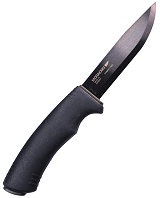
Ferrocerium
Rod Firesteel

550 Paracord
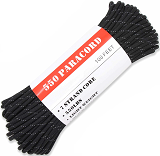
Stainless Steel Canteen
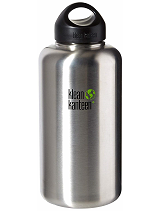
Waterproof
Tarp

Multitool
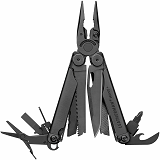
Stormproof Matches
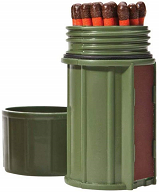
Folding
Hand Saw
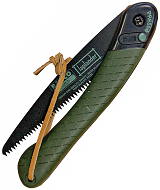
Stainless Steel
Pot
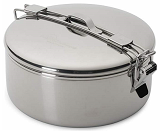
Waterproof
Rain Poncho
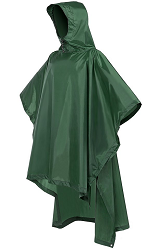
Water
Purification
Tablets

Kukri Machete
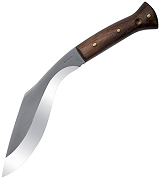
Magnifying
Lens Firestarter

Duct Tape
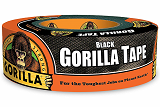
Compass
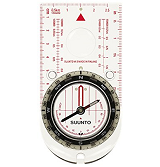
Water Filter

Magnesium
Stick Firestarter
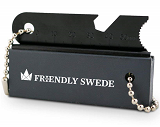
Blade
Sharpener
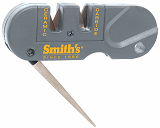
Firestarting
Tinder
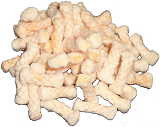
Fishing Kit
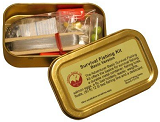

Survival Gear
Fixed Blade Bushcraft Knife

Ferrocerium
Rod Firesteel

550 Paracord

Stainless Steel Canteen

Waterproof
Tarp

Multitool

Stormproof Matches

Folding
Hand Saw

Stainless Steel
Pot

Waterproof
Rain Poncho

Water
Purification
Tablets

Kukri Machete

Magnifying
Lens Firestarter

Duct Tape

Compass

Water Filter

Magnesium
Stick Firestarter

Blade
Sharpener

Firestarting
Tinder

Fishing Kit


Comments (3)
J'aime bien votre site Web. I like your website
helpful info for scouting.
thank you
Urban Survival? Most of the items you promote are ILLEGAL anywhere except the true wilderness. I have quite a few State parks around and you would be arrested for carrying a fixed blade knife (concealed weapon), fishing gear (need a license first), fires are only permitted where there is a cooking grate, and that is usually at the trail head. Set up a tarp and you are illegally camping. Most parks have 6am to 10pm hours and it is even illegal to be in the park overnight. While I agree these items are useful in the proper context, there are far fewer people who can legally use this gear then there are those who can not. Most people are not aware of the difference.
Previous post should read 'Much' not 'Most'. The main reason these things are illegal is that areas for 'hiking' have largely been downgraded to 'trail walking' where it appeals to a larger audience. Trails are owned by some govt entity (city, state, county) and are maintained. I am never more than a mile from the nearest business or residence. The best piece of survival gear in 'Urban' situations is a cell phone, followed by a bottle of water.
Yes, it is unfortunate that many state/national parks don't allow "backcountry" camping, however there are also many that do. Usually the larger parks are the ones that permit it. This over regulation of parks, in my opinion, is a flaw in the current government / society that will hopefully change in the near future.
A good way to check for parks in your area is to look at a map on google.com for example and zoom into the green areas and it will show the park name then you can research that park.
By the way, I don't think these items are quite "illegal" considering I bought most of this stuff on Amazon.com (which doesn't sell illegal items)
Thanks for leaving a comment.